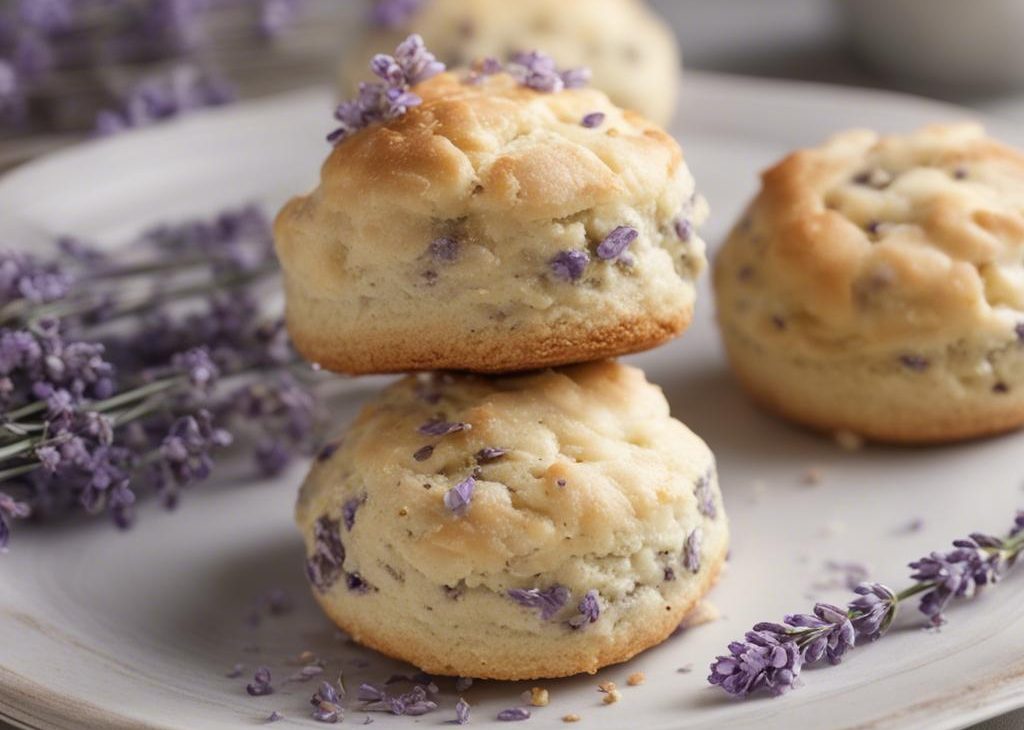


Using my favorite scones recipe, you can make bakery-style lavender scones right at home. Dried culinary lavender adds a lovely aromatic flavor without tasting overpowering. I love adding buttermilk and fresh lemon zest for extra flavor, too. The scones are crumbly, yet moist and perfect for spring brunches, tea parties, bridal showers, & Mother’s Day.
Let’s make Buttermilk Lavender Scones! But first, a briefing.
I never enjoyed floral flavors in baked goods—I mean, everything ends up tasting like hand soap or a candle. Am I alone here?!
Those were my thoughts until last year when, by the inspiration of Tessa who wrote Icing on the Cake, I tried Blackberry Lavender Cake. That day I ate my words and a fat piece of the most incredible cake to ever grace my tastebuds. Lavender, when used correctly, is DEEEEEELICIOUS.
Today I’m sharing a scone variation. Using my perfected scones recipe, I added fresh lemon zest and cooking lavender, swapped heavy cream for tangy buttermilk, and topped the scones with lemon lavender icing. These better-than-the-bakery scones are flaky and moist in the centers with crisp crumbly edges. The fresh spring flavors are completely divine and, thankfully, there’s not a trace of hand soapy flavor detected. 😉
I have several scone recipes that begin with the same basic recipe. Have you ever tried my blueberry scones, apple cinnamon scones, or chocolate chip scones? Those are just a few reader favorites. You only need 10 ingredients for today’s lavender scones.
.. For these lavender scones, you’ll add lemon zest and lavender to the dry ingredients and swap heavy cream for buttermilk.
Did you know that keeping scone dough as cold as possible prevents over-spreading? (Same thing with cookie dough!) When scones over-spread in the oven, they lose the flaky, moist, and deliciously crumbly texture. The easiest way to avoid disaster is to use cold ingredients like cold buttermilk, egg, and butter. Don’t waste your time and money by overlooking this!
However, frozen + grated butter is the secret to real scone success. Like we do when making pie crust, work the cold butter into the dry ingredients to create crumbs. The butter/flour crumbs melt as the lavender scones bake, releasing steam and creating air pockets. These pockets create a flaky center while keeping the edges crumbly and crisp. Refrigerated butter might melt in the dough as you work with it, but frozen butter will hold out until the oven. And the finer the pieces of cold butter, the less the scones spread and the quicker the butter mixes into the dry ingredients.
There’s a fine line between eating a deliciously flavored lavender treat and eating potpourri. And up until recently, I was totally new to cooking with lavender. You might be too, so let me help you determine the best lavender to use here. This multi-use dried culinary lavender is perfectly edible and a wonderful addition to food, drinks, essential oils, and more. It’s exactly what I use when I make lavender scones.
Baker’s Tip: When transferring the sticky shaped scones from your work surface to the lined baking sheet, use a thin spatula. This is where the scones can fall apart, but a thin spatula helps seamlessly transfer the dough around.
Since the lavender flavor is so light in the scones themselves, using lavender again in the icing makes sense. The best way to make lavender icing is to infuse the liquid ingredient (milk) with plenty of lavender flavor. Bring milk to a simmer, then let it steep with 1 teaspoon of dried cooking lavender. Strain the lavender through a fine mesh strainer, then whisk the infused milk with a little lemon juice and confectioners’ sugar. The icing is way easier than it sounds!
If you don’t have a fine mesh strainer (affiliate link to my favorite set), pick one up. You’ll use it a lot in your baking, especially when a recipe calls for a sifted ingredient.
I know you’ll love these!
Using my favorite scones recipe, you can make bakery-style lavender scones right at home. They’re buttery and moist with crisp crumbly edges and soft flaky centers. Read through the recipe before beginning. You can skip the chilling for 15 minutes prior to baking, but I highly recommend it to prevent the scones from over-spreading.